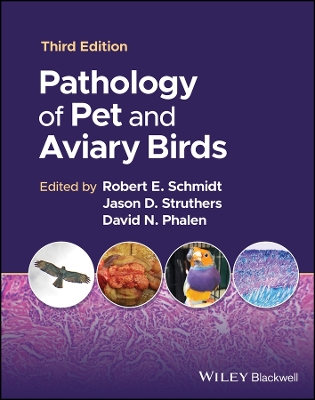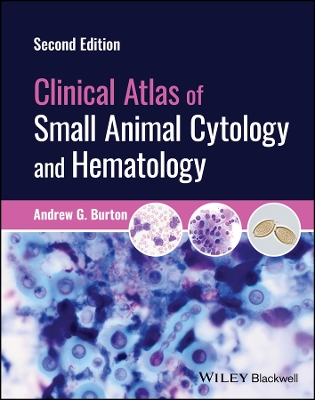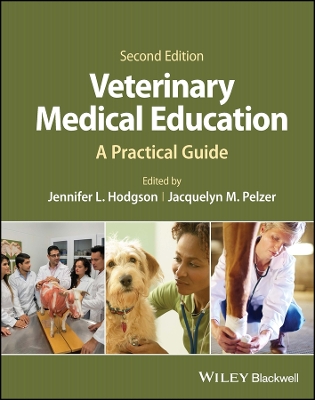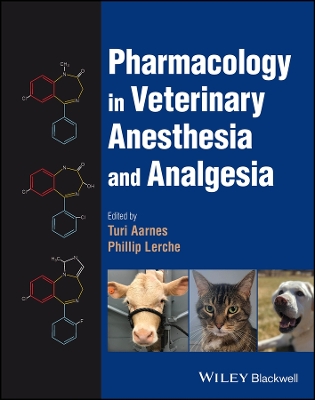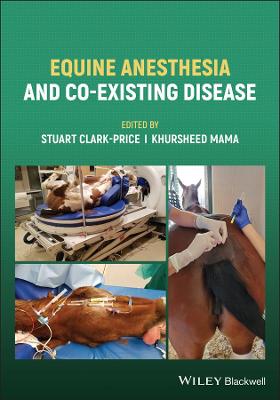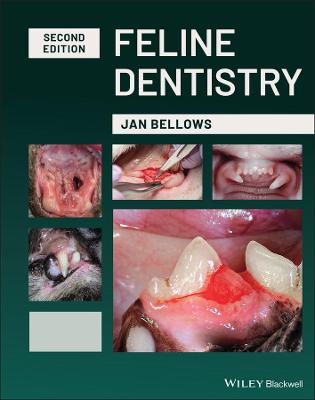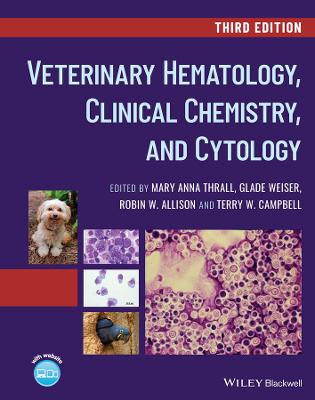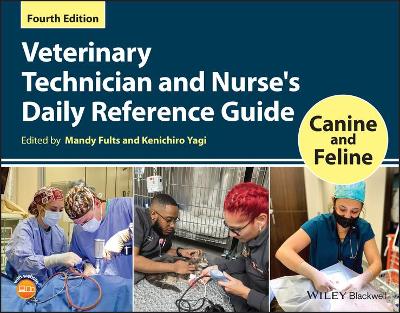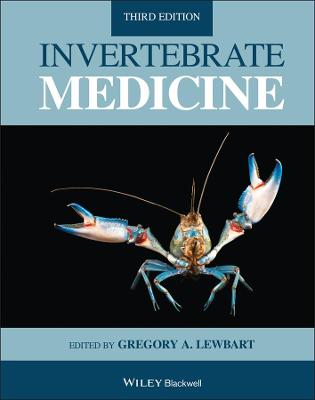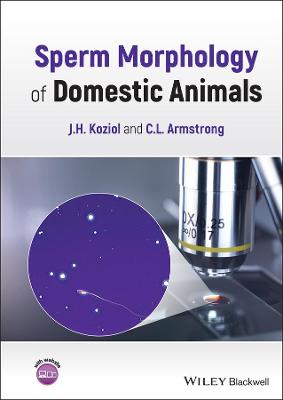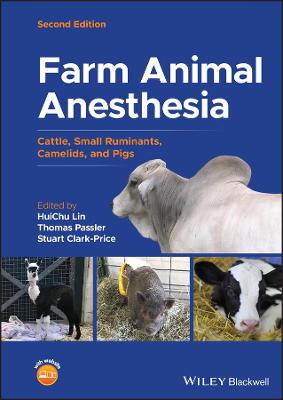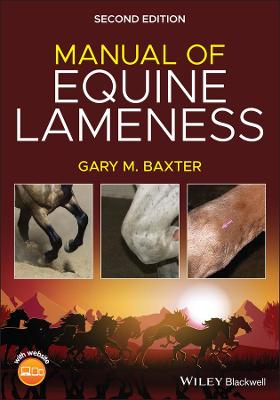Parasitology
 -15%
portes grátis
-15%
portes grátis
Parasitology
An Integrated Approach
Pitt, Sarah J.; Gunn, Alan
John Wiley & Sons Inc
07/2022
560
Mole
Inglês
9781119641193
15 a 20 dias
1186
About the Companion Website xvii
1 Animal Associations and the Importance of Parasites 1
1.1 Introduction 1
1.2 Animal Associations 1
1.3 Parasite Hosts 10
1.4 Zoonotic Infections 13
1.5 The Co-evolution of Parasites and Their Hosts 13
1.6 Parasitism as a 'Lifestyle': Advantages and Limitations 17
1.7 The Economic Cost of Parasitic Diseases 18
1.8 Why Parasitic Diseases Remain a Problem 22
2 Taxonomy 27
2.1 Introduction 27
2.2 Viruses: A Special (Unresolved) Case 28
2.3 Taxonomic Hierarchy 28
2.4 Kingdom Protista 30
2.5 Kingdom Animalia 31
3 Parasitic Protozoa Part A: Phyla Rhizopoda, Metamonada, Apicomplexa 33
3.1 Introduction 33
3.2 Phylum Rhizopoda 34
3.3 Phylum Metamonada 42
3.4 Phylum Apicomplexa 49
3.5 Subclass Coccidiasina 60
4 Parasitic Protozoa Part B: Phylum Kinetoplastida; Parasitic Algae and Fungi 74
4.1 Introduction 74
4.2 Phylum Kinetoplastida 74
4.3 Phylum Chlorophyta 96
4.4 Kingdom Fungi 97
5 Platyhelminth and Acanthocephalan Parasites 101
5.1 Introduction 101
5.2 Phylum Platyhelminthes 101
5.3 Class Cestoda 125
5.4 Phylum Acanthocephala 145
6 Nematode Parasites 148
6.1 Introduction 148
6.2 Class Enoplea 150
6.3 Class Rhabdita 156
7 Arthropod Parasites 182
7.1 Introduction 182
7.2 Phylum Chelicerata 183
7.3 Phylum Crustacea 194
7.4 Subphylum Hexapoda 200
8 Parasite Transmission 229
8.1 Introduction 229
8.2 Contaminative Transmission 230
8.3 Transmission Associated with Reproduction 234
8.4 Autoinfection 239
8.5 Nosocomial Transmission 239
8.6 Active Parasite Transmission 240
8.7 Hosts and Vectors 241
8.8 Host Factors 246
8.9 Co-Transmission and Interactions Between Pathogens 254
8.10 Environmental Factors 256
9 Immune Reactions to Parasitic Infections 261
9.1 Introduction 261
9.2 Invertebrate Immunity 262
9.3 Vertebrate Immunity 265
9.4 Innate Immunity to Parasites 272
9.5 Adaptive Immune Reactions to Parasites 275
9.6 Microbiomes and Host Immune Reactions to Parasites 277
9.7 Avoiding the Host Immune Response 278
9.8 Immunity to Malaria 284
9.9 Schistosoma spp. and Hepatitis C Virus Interactions 289
9.10 HIV-AIDS and Parasitic Infections 289
10 Pathology Part A: Factors Influencing Pathogenesis, How Parasites Cause Pathology, Types of Pathology 295
10.1 Introduction 296
10.2 Factors Influencing Pathogenesis 296
10.3 Mechanisms By Which Parasites Cause Pathology 298
10.4 Types of Pathology 300
11 Pathology Part B: Damage to Specific Organs; Co-Infections and Pathogenesis 322
11.1 Introduction 322
11.2 Damage to Specific Organs 322
11.3 Co-Infections and Pathogenesis 344
12 The Useful Parasite 347
12.1 Introduction: The Goodness of Parasites? 347
12.2 The Importance of Parasites for the Maintenance of a Healthy Immune System 348
12.3 The Use of Parasites to Treat Medical Conditions 355
12.4 Parasites as Sources of Novel Pharmaceutically Active Substances 366
12.5 Parasites as Biological Control Agents 369
12.6 Parasites as Forensic Indicators 372
13 The Identification of Protozoan and Helminth Parasites 375
13.1 Laboratory Testing for Parasitic Infections: Introduction 375
13.2 Importance of Correct Identification 376
13.3 Properties of an Ideal Diagnostic Test 377
13.4 Isolation of Parasites 379
13.5 Identification from Gross Morphology 382
13.6 Biochemical Techniques for Identification 386
13.7 Immunological Techniques for Identification 387
13.8 Molecular Techniques for Identification 389
13.9 Diagnostic Testing of Parasitic Infections Outside the Laboratory: Introduction 393
14 Parasite Treatment 403
14.1 Introduction 403
14.2 The Ideal Antiparasitic Drug 403
14.3 Pharmaceutical Drugs 409
14.4 DNA/RNA Technology 411
14.5 Molecular Chaperones (Heat Shock Proteins) 414
14.6 Nanotechnology 415
14.7 Quantum Dots 417
14.8 Natural Remedies 417
14.9 Homeopathy 421
15 Parasite Vaccines 422
15.1 Introduction 422
15.2 The Design and Use of Vaccines 423
15.3 Herd Immunity 423
15.4 Factors Limiting the Production of Commercial Antiparasitic Vaccines 424
15.5 Properties of an Ideal Vaccine 424
15.6 Types of Vaccine 426
15.7 Identification of Antigens for Use in Anti-parasite Vaccines 432
15.8 Vaccine Delivery 433
15.9 Vaccines Against Malaria 434
15.10 Nanobodies (Single Domain Antibodies) 435
15.11 Problems with Vaccination Strategies 435
16 Parasite Control 437
16.1 Introduction 437
16.2 Eradication, Elimination, and Control 439
16.3 Education 441
16.4 Environmental Modification and Cultural Control 442
16.5 Remote Sensing and GIS Technology 444
16.6 Whether to Treat the Individual or the Population 445
16.7 Piggy-Backing Control Programmes 447
16.8 Disruptions to Control Programmes 447
16.9 Role of Governments, Foundations, and Aid Organisations 449
References 452
Index 521
About the Companion Website xvii
1 Animal Associations and the Importance of Parasites 1
1.1 Introduction 1
1.2 Animal Associations 1
1.3 Parasite Hosts 10
1.4 Zoonotic Infections 13
1.5 The Co-evolution of Parasites and Their Hosts 13
1.6 Parasitism as a 'Lifestyle': Advantages and Limitations 17
1.7 The Economic Cost of Parasitic Diseases 18
1.8 Why Parasitic Diseases Remain a Problem 22
2 Taxonomy 27
2.1 Introduction 27
2.2 Viruses: A Special (Unresolved) Case 28
2.3 Taxonomic Hierarchy 28
2.4 Kingdom Protista 30
2.5 Kingdom Animalia 31
3 Parasitic Protozoa Part A: Phyla Rhizopoda, Metamonada, Apicomplexa 33
3.1 Introduction 33
3.2 Phylum Rhizopoda 34
3.3 Phylum Metamonada 42
3.4 Phylum Apicomplexa 49
3.5 Subclass Coccidiasina 60
4 Parasitic Protozoa Part B: Phylum Kinetoplastida; Parasitic Algae and Fungi 74
4.1 Introduction 74
4.2 Phylum Kinetoplastida 74
4.3 Phylum Chlorophyta 96
4.4 Kingdom Fungi 97
5 Platyhelminth and Acanthocephalan Parasites 101
5.1 Introduction 101
5.2 Phylum Platyhelminthes 101
5.3 Class Cestoda 125
5.4 Phylum Acanthocephala 145
6 Nematode Parasites 148
6.1 Introduction 148
6.2 Class Enoplea 150
6.3 Class Rhabdita 156
7 Arthropod Parasites 182
7.1 Introduction 182
7.2 Phylum Chelicerata 183
7.3 Phylum Crustacea 194
7.4 Subphylum Hexapoda 200
8 Parasite Transmission 229
8.1 Introduction 229
8.2 Contaminative Transmission 230
8.3 Transmission Associated with Reproduction 234
8.4 Autoinfection 239
8.5 Nosocomial Transmission 239
8.6 Active Parasite Transmission 240
8.7 Hosts and Vectors 241
8.8 Host Factors 246
8.9 Co-Transmission and Interactions Between Pathogens 254
8.10 Environmental Factors 256
9 Immune Reactions to Parasitic Infections 261
9.1 Introduction 261
9.2 Invertebrate Immunity 262
9.3 Vertebrate Immunity 265
9.4 Innate Immunity to Parasites 272
9.5 Adaptive Immune Reactions to Parasites 275
9.6 Microbiomes and Host Immune Reactions to Parasites 277
9.7 Avoiding the Host Immune Response 278
9.8 Immunity to Malaria 284
9.9 Schistosoma spp. and Hepatitis C Virus Interactions 289
9.10 HIV-AIDS and Parasitic Infections 289
10 Pathology Part A: Factors Influencing Pathogenesis, How Parasites Cause Pathology, Types of Pathology 295
10.1 Introduction 296
10.2 Factors Influencing Pathogenesis 296
10.3 Mechanisms By Which Parasites Cause Pathology 298
10.4 Types of Pathology 300
11 Pathology Part B: Damage to Specific Organs; Co-Infections and Pathogenesis 322
11.1 Introduction 322
11.2 Damage to Specific Organs 322
11.3 Co-Infections and Pathogenesis 344
12 The Useful Parasite 347
12.1 Introduction: The Goodness of Parasites? 347
12.2 The Importance of Parasites for the Maintenance of a Healthy Immune System 348
12.3 The Use of Parasites to Treat Medical Conditions 355
12.4 Parasites as Sources of Novel Pharmaceutically Active Substances 366
12.5 Parasites as Biological Control Agents 369
12.6 Parasites as Forensic Indicators 372
13 The Identification of Protozoan and Helminth Parasites 375
13.1 Laboratory Testing for Parasitic Infections: Introduction 375
13.2 Importance of Correct Identification 376
13.3 Properties of an Ideal Diagnostic Test 377
13.4 Isolation of Parasites 379
13.5 Identification from Gross Morphology 382
13.6 Biochemical Techniques for Identification 386
13.7 Immunological Techniques for Identification 387
13.8 Molecular Techniques for Identification 389
13.9 Diagnostic Testing of Parasitic Infections Outside the Laboratory: Introduction 393
14 Parasite Treatment 403
14.1 Introduction 403
14.2 The Ideal Antiparasitic Drug 403
14.3 Pharmaceutical Drugs 409
14.4 DNA/RNA Technology 411
14.5 Molecular Chaperones (Heat Shock Proteins) 414
14.6 Nanotechnology 415
14.7 Quantum Dots 417
14.8 Natural Remedies 417
14.9 Homeopathy 421
15 Parasite Vaccines 422
15.1 Introduction 422
15.2 The Design and Use of Vaccines 423
15.3 Herd Immunity 423
15.4 Factors Limiting the Production of Commercial Antiparasitic Vaccines 424
15.5 Properties of an Ideal Vaccine 424
15.6 Types of Vaccine 426
15.7 Identification of Antigens for Use in Anti-parasite Vaccines 432
15.8 Vaccine Delivery 433
15.9 Vaccines Against Malaria 434
15.10 Nanobodies (Single Domain Antibodies) 435
15.11 Problems with Vaccination Strategies 435
16 Parasite Control 437
16.1 Introduction 437
16.2 Eradication, Elimination, and Control 439
16.3 Education 441
16.4 Environmental Modification and Cultural Control 442
16.5 Remote Sensing and GIS Technology 444
16.6 Whether to Treat the Individual or the Population 445
16.7 Piggy-Backing Control Programmes 447
16.8 Disruptions to Control Programmes 447
16.9 Role of Governments, Foundations, and Aid Organisations 449
References 452
Index 521

